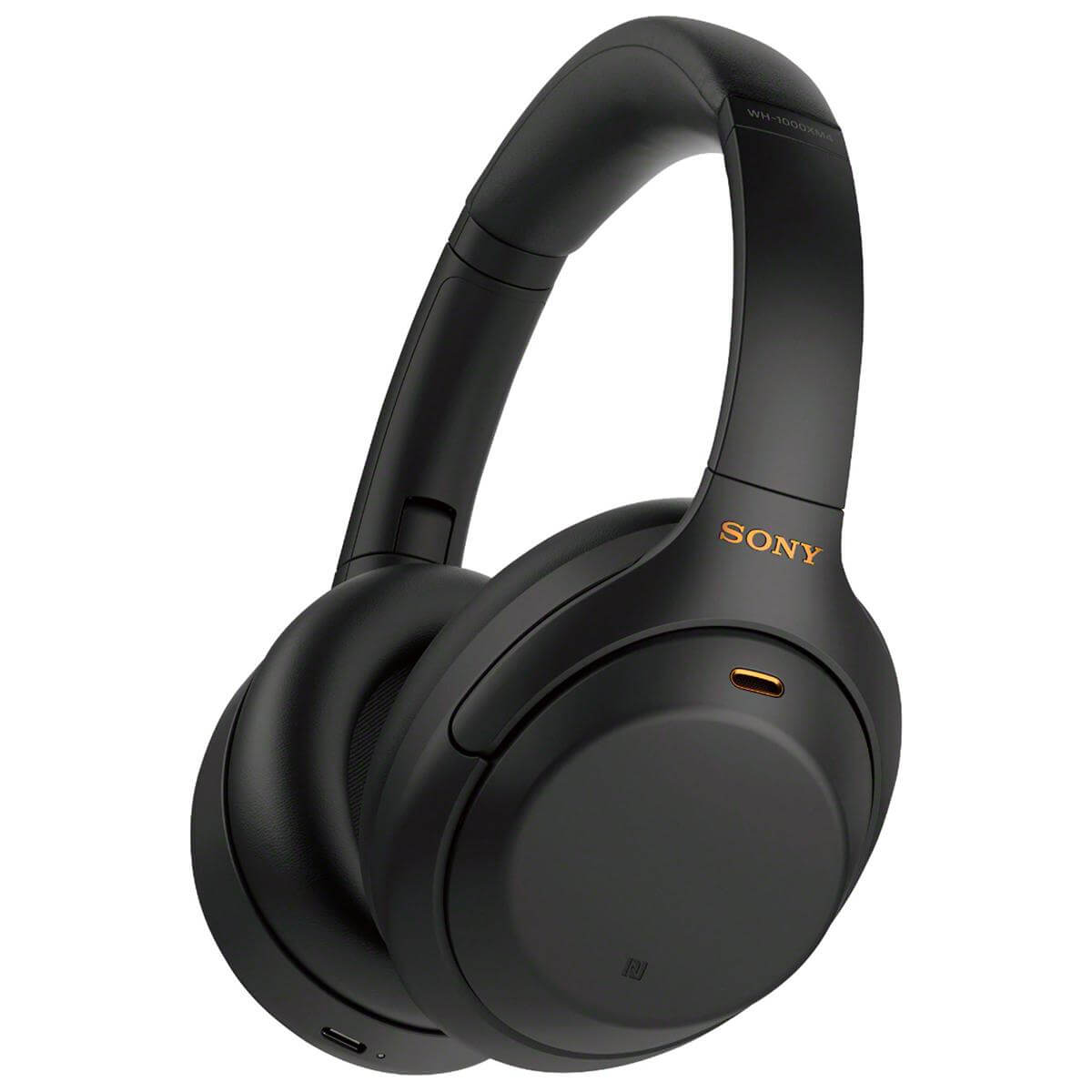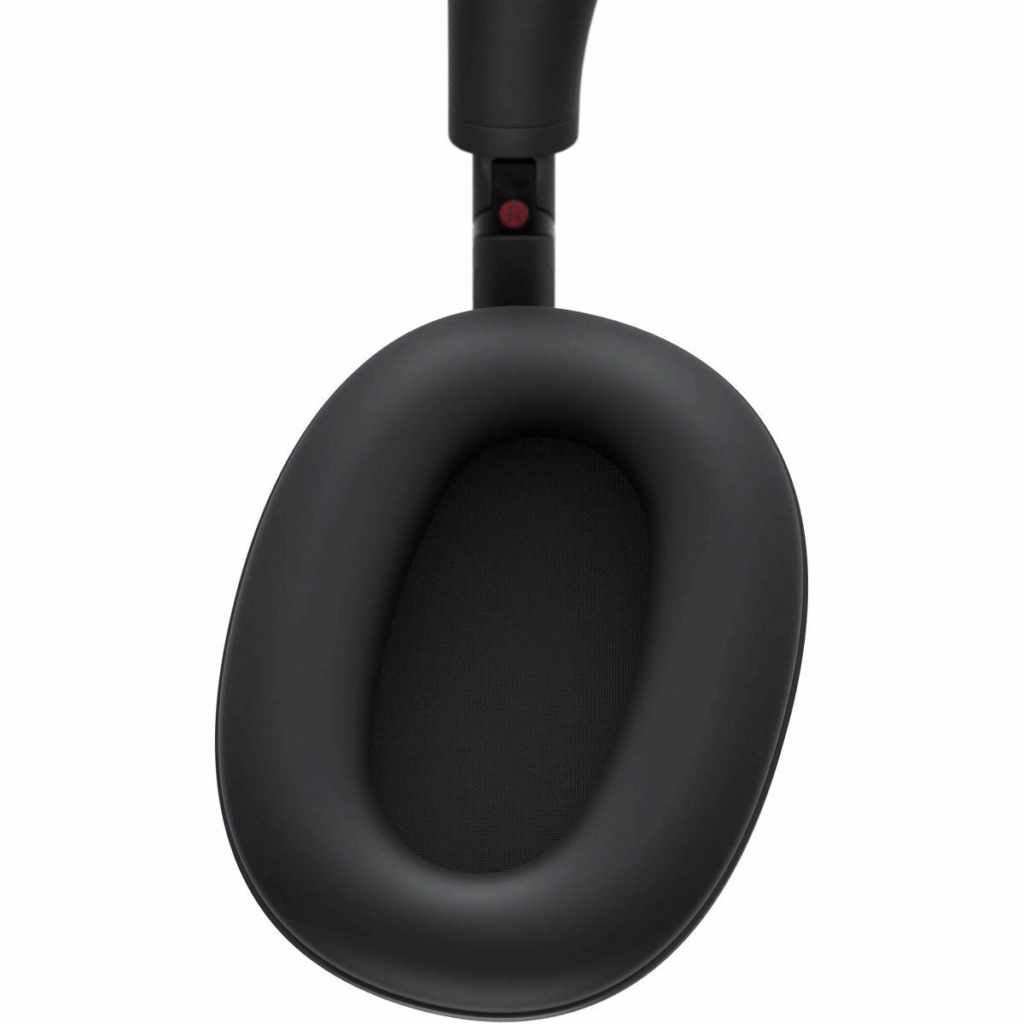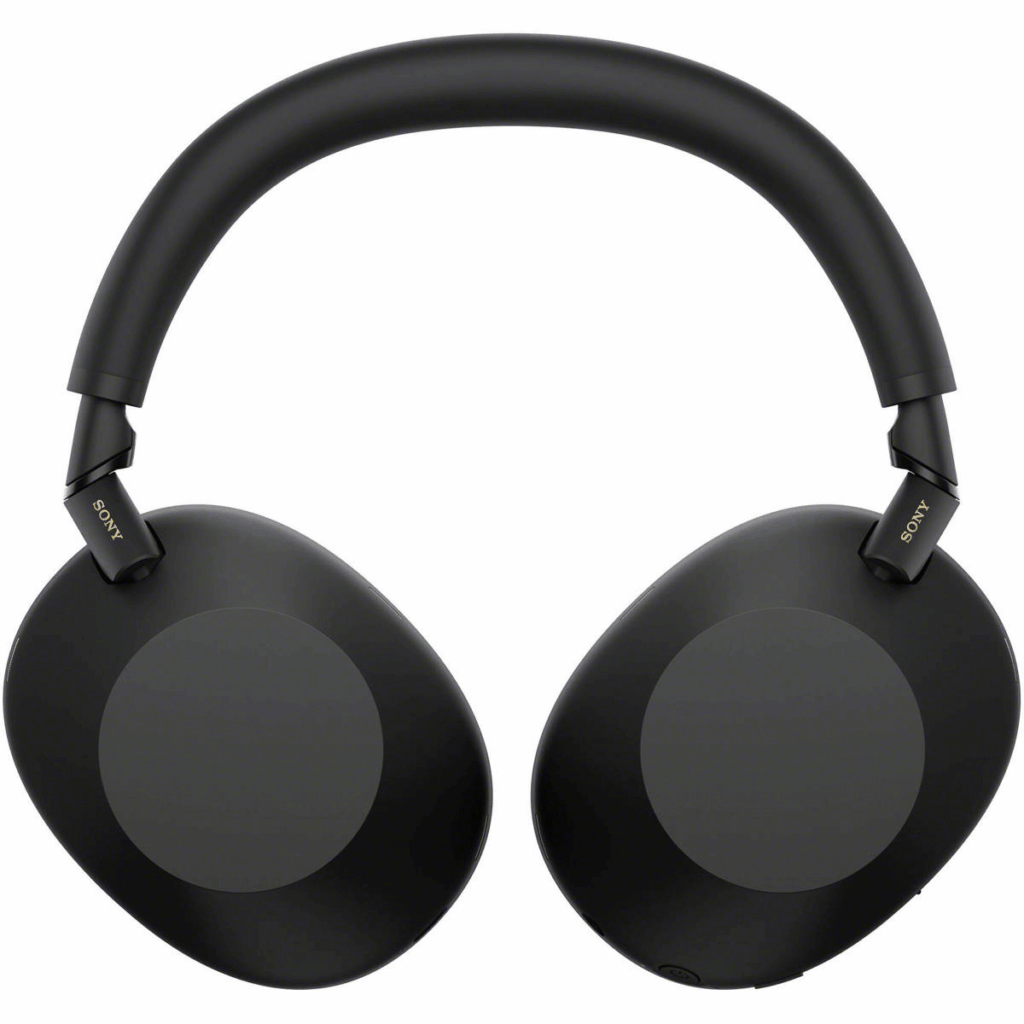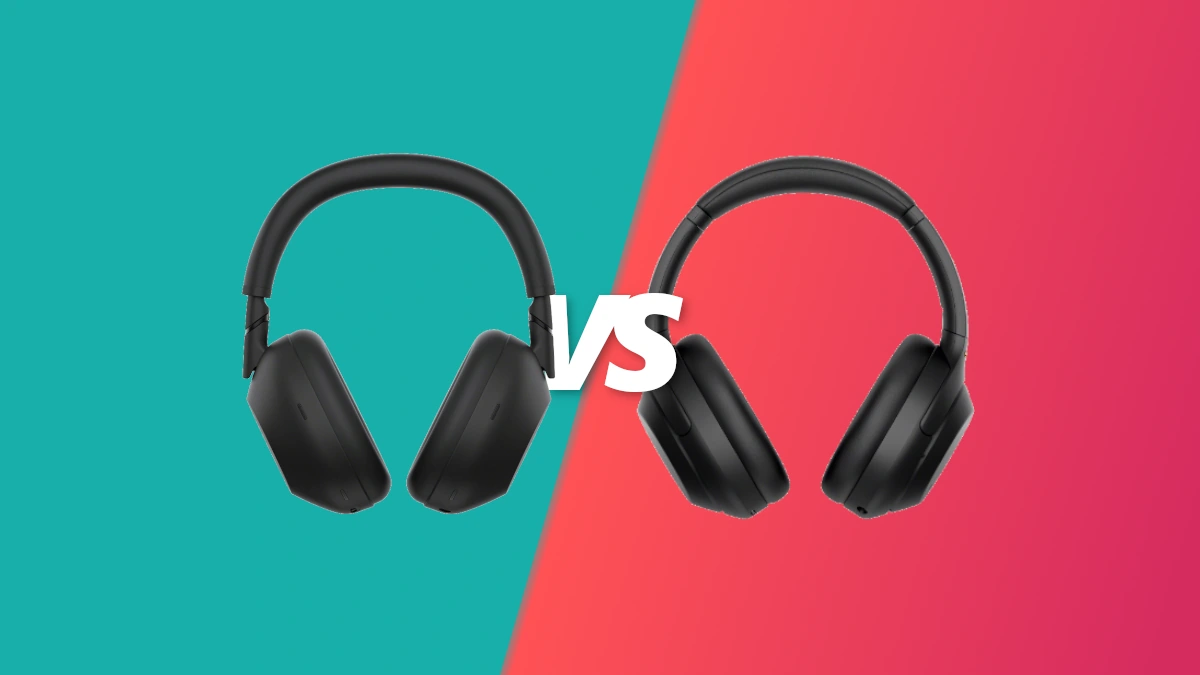Our detailed comparison of the Sony WH-1000XM6 and the critically acclaimed WH-1000XM4 reveals whether the latest model is a true upgrade
Sony WH-1000XM6

Pros
- Industry-leading ANC
- Excellent sound performance
- Smooth, responsive touch controls
Cons
- Significantly more expensive than the XM4
- Minimal battery life improvement
- Not water-resistant
Sony WH-1000XM4

Pros
- Great value for the price
- Strong audio from 40mm drivers
- Features still hold up well
Cons
- No water resistance
- Call quality could be better
- ANC isn’t as strong as the XM6
Feature Comparison
Table of Contents
Even with the launch of the impressive Sony WH-1000XM6, many are still asking: can they truly surpass the legendary WH-1000XM4? Are they now the best noise-canceling headphones you can buy?
When the WH-1000XM4 debuted, they received widespread praise. Reviewers loved their powerful noise cancellation, rich sound, and extensive features. Even after the WH-1000XM5 came out, many stuck with the XM4, mainly because the newer model didn’t fold.
That criticism of the XM5 is understandable. I’ve tested them thoroughly. But the WH-1000XM6 feels like the upgrade the XM4 always deserved. They bring back foldability, deliver outstanding ANC, and offer beautifully balanced audio. In my view, they rank among the best over-ear headphones available today.
Still, the big questions remain:
- Should new buyers choose the XM6 over the XM4?
- And is it worth upgrading if you already own the XM4?
Let’s break it down and find out which Sony headphones are right for you.

We also compared the Sony WH-1000XM6 vs. Bose QuietComfort Ultra—read the full breakdown here.
Sony WH-1000XM6 vs. WH-1000XM4: Price
The Sony WH-1000XM6 launched in May 2025, nearly five years after the WH-1000XM4. At release, the XM6 cost $449 / £399 / AU$699. That’s a significant jump from the XM4’s original price of $349 / £349 / AU$549.
The XM6 also launched at a higher price than the WH-1000XM5, which debuted in 2022 for around $50 / £20 less.
In 2025, however, the XM4 is much more affordable. You can usually find it for about $249 / £199 / AU$399—roughly half the price of the XM6.
Both models are available in multiple colors: Black, Midnight Blue, and Platinum Silver. I tested the silver version for each, and they both look sleek and premium.

Sony WH-1000XM6 vs WH-1000XM4: Features Comparison
When Sony released the WH-1000XM4 in 2020, they set a high bar. With excellent active noise cancellation (ANC), wear detection, and multi-point connectivity, they quickly became a top choice.
But time moves on—and so has the technology. The WH-1000XM6 significantly improves on the XM4 in several key areas. These include better noise cancellation, more responsive touch controls, and a more advanced equalizer with ten bands instead of five.
Exclusive Features on the WH-1000XM6
The XM6 introduces several new features not found on the XM4:
- Auracast compatibility for broader audio sharing.
- Scene-based listening, which adjusts ANC based on your surroundings.
- Cinema Listening, which transforms stereo sound into a more immersive, 3D experience.
These additions mark a bigger leap forward than what we saw with the XM5, which mostly refined the XM4’s existing features.
Noise Cancellation: A Clear Winner
ANC is the standout feature for both models—but the XM6 takes it to another level.
The XM4 still performs well, especially with low-end noise. They’re great for tuning out distractions and staying focused. However, the XM6 delivers a noticeably quieter experience, even in noisy environments like traffic or while vacuuming.
Two major upgrades power this improvement:
Shared Features and Improvements
Both models offer a range of useful features:
- Ambient Sound mode with a 1–20 level slider.
- LDAC and DSEE for high-quality Bluetooth audio.
- Touch controls, including a handy passthrough mode by cupping the right earcup.
The XM6 refines these controls. Volume adjustments now require just a flick and hold, rather than repeated swipes.
Battery Life: No Progress Here
Battery life remains unchanged. Both models offer 30 hours of playback with ANC on. While this was solid in 2020, newer competitors now offer much more. The XM6 can charge while in use, which helps, but the lack of improvement is a bit disappointing.
The XM4 still holds up well and includes most features a typical user would want. But the XM6 does everything the XM4 can—only better—and adds a few extras.
Verdict: The XM6 clearly comes out on top.
Sony WH-1000XM6 vs WH-1000XM4: Sound Quality

- A stronger QN3 HD noise-canceling processor.
- Twelve microphones—seven more than the XM4—are working together to block unwanted sounds.
The Sony WH-1000XM4 have long been praised for their excellent sound. Even today, they deliver detailed, expressive audio with clear separation between instruments.
When streaming music on Tidal, the XM4 impressed with punchy bass and energetic treble. The mids remained clear, especially vocals, which stood out well. The sound leans slightly toward a V-shaped profile—great for EDM and hip-hop—but you can adjust it for a flatter response if you prefer.

XM6: A More Balanced and Spacious Sound
The WH-1000XM6 builds on the XM4’s strengths and takes things further. They still offer rich bass and crisp treble, but the overall sound is more balanced right out of the box.
Sony developed the XM6 with input from top mastering engineers. That collaboration shows in the even frequency response, which feels more refined than the XM4 or even the XM5.
One standout improvement is the soundstage. The XM6 provides more width and space between instruments, creating a more immersive experience. On tracks like Rains Again by Solji, each element had room to breathe, making the music feel more open and lifelike.
Cinema Mode also enhances this effect. It up-mixes stereo audio into a wider, more cinematic format—something the XM4 doesn’t offer.
Call Quality: XM6 Takes the Lead
Both models handle calls well, delivering clear speech whether you’re on a video call or a regular phone call. But the XM6 outperforms the XM4 in noisy environments.
In a demo, someone made a call in a loud room. Once they put on the XM6, their voice came through cleanly, with background noise almost entirely removed.
This clarity comes from six beamforming microphones and advanced AI noise reduction. The XM4 has fewer mics and lacks the same level of voice isolation.
The XM4 still sounds great and offers strong performance for music and calls. But the XM6 improves on nearly every aspect, offering a more balanced sound, a wider soundstage, and clearer call quality.
For sound, the XM6 are the clear winner.
Sony WH-1000XM6 vs WH-1000XM4: Design
Aside from the upgraded noise cancellation, the biggest difference between the WH-1000XM6 and XM4 is their design.
Yes, the XM6 brings back foldability, which made the XM4 so travel-friendly. But side by side, these two headphones look and feel very different.
Foldability and Build Quality
Both models fold for storage, but the XM6 introduces a key improvement: metal hinges. These are stronger and more durable than the XM4’s plastic ones, making the XM6 feel sturdier and more reliable.
Each pair comes with a carry case. The XM4 case is slim and zips shut, but it’s a bit long. The XM6 case uses a magnetic lock and looks more premium, though it’s bulkier and may not fit easily in smaller bags.
Aesthetic and Comfort Differences
The XM6 has a chunkier look on the ear. Unlike the XM4, it doesn’t have a visible frame connecting the hinge to the earcup. That frame gave the XM4 a slimmer, more angular appearance.
The headband also differs. The XM4’s band looks more plasticky, while the XM6 features a smoother, more refined finish. It’s slimmer, more comfortable, and feels closer to the design of the XM5.
Durability and Controls
Unfortunately, neither model has an official IP rating for water resistance. That’s a missed opportunity for the XM6.
Still, the XM6 improves in other areas. It offers:
- Refined button controls
- A more comfortable headband
- Stronger, more reliable folding mechanisms
While the XM4 still looks sleek, the XM6 wins on design. It feels more premium, more durable, and more comfortable overall.
Sony WH-1000XM6 vs WH-1000XM4: Value for Money
Let’s wrap up with a key question: Which model offers better value?
At launch, the WH-1000XM6 cost significantly more than the XM4. The XM6 typically retails for $449 / £399 / AU$699, while the XM4 launched at $349 / £349 / AU$549.
Today, you can often find the XM4 for around $249 / £199 / AU$ 399. That’s a big price gap. So, are the XM6s worth nearly double the cost?
XM4: Still a Strong Contender
The XM4 remains a solid choice. They offer:
- Great sound quality with customizable EQ
- Reliable ANC
- A compact, foldable design
For many users, that’s more than enough, especially at their current lower price.
XM6: Premium Features at a Premium Price
That said, the XM4 is starting to show its age. Their ANC, while good, no longer leads the pack. Newer models like the XM6, XM5, and Bose QuietComfort Ultra outperform them.
The XM4 also looks a bit dated. The plastic build and exposed wear sensor feel less refined compared to newer designs.
The XM6 brings several upgrades:
- Better sound quality
- More advanced microphones for calls
- Smoother, more responsive touch controls
- A more premium and durable build
And unlike the XM5, the XM6 keeps the foldable design.
If you want solid ANC and great sound at a lower price, the XM4 is still a smart buy.
But if you’re after top-tier performance, modern design, and the latest features, the XM6 is worth the investment.
It’s a tie—value depends on your needs and budget.
Sony WH-1000XM6 vs WH-1000XM4: Final Verdict
The release of the Sony WH-1000XM6 marks a turning point. It feels like the end of an era, with the XM6 finally surpassing the XM4 in every meaningful way.
The XM4 are still excellent headphones. If you’re on a budget, they remain a smart and reliable choice. They offer solid ANC, great sound, and a compact design.
But if you’re after the best of the best—top-tier noise cancellation, balanced audio, and crystal-clear call quality—the XM6 is the better pick.
They deliver across the board. From design to performance, the XM6 feels like a true flagship. Yes, they’re more expensive, but the improvements justify the price.
Whether you’re upgrading from the XM4 or buying your first premium headphones, the XM6 is a fantastic choice.
In short, the XM4 are great, but the XM6 are greater.

Leave a Reply